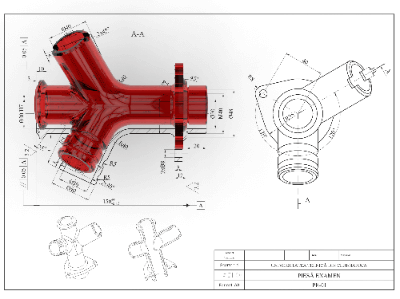What Is 2D CAD?
 2D CAD is computer software that enables the creation, modification, and management of drawings. It has revolutionized the drafting process, previously done by hand, making it more efficient and manageable.
2D CAD is computer software that enables the creation, modification, and management of drawings. It has revolutionized the drafting process, previously done by hand, making it more efficient and manageable.
With the advancements in PC processing power and the affordability of printers, many manufacturing companies have adopted 2D CAD. This software has been developed for various industries, including machinery, architecture, civil engineering, and electrical wiring, often featuring industry-specific functions.
Uses of 2D CAD
2D CAD was initially used for drafting hand-drawn designs. Traditional hand-drawn drawings usually follow projection rules, displaying the product’s shape from multiple viewpoints, known as the first-angle or third-angle methods. However, with the advent of 3D models in the 2000s, design and manufacturing processes have evolved. While initiatives to combine 3D models and 2D drawings are underway in various industries, 2D drawings remain widely used.
Principle of 2D CAD
2D CAD operates similarly to general PC software, using a keyboard and mouse for input. It allows for the easy drawing of straight lines and curves of specified diameters. Autodesk’s AutoCAD is a well-known 2D CAD software with a significant market share. The use of the “dxf” file format ensures compatibility across different 2D CAD applications, facilitating data exchange between designers.
Other Information on 2D CAD
1. The Difference Between 2D CAD and 3D CAD
While 2D CAD represents objects in triangulation styles such as plan, front, and side views, 3D CAD allows for three-dimensional representation on a computer screen, with the flexibility to switch viewpoints. The transition from 2D to 3D CAD involves a different approach to drawing, where 3D models are created by extruding and modifying 2D drawings.
2. Reasons Why 2D CAD Will Not Go Away
Despite the increasing adoption of 3D CAD, many manufacturers still rely on 2D CAD. While 3D CAD offers comprehensive information, 2D CAD is simpler for adding instructions to drawings. The transition to 3D CAD also requires significant investment in equipment and training, and for manufacturing simple products like screws, the benefits of 3D CAD may be minimal.